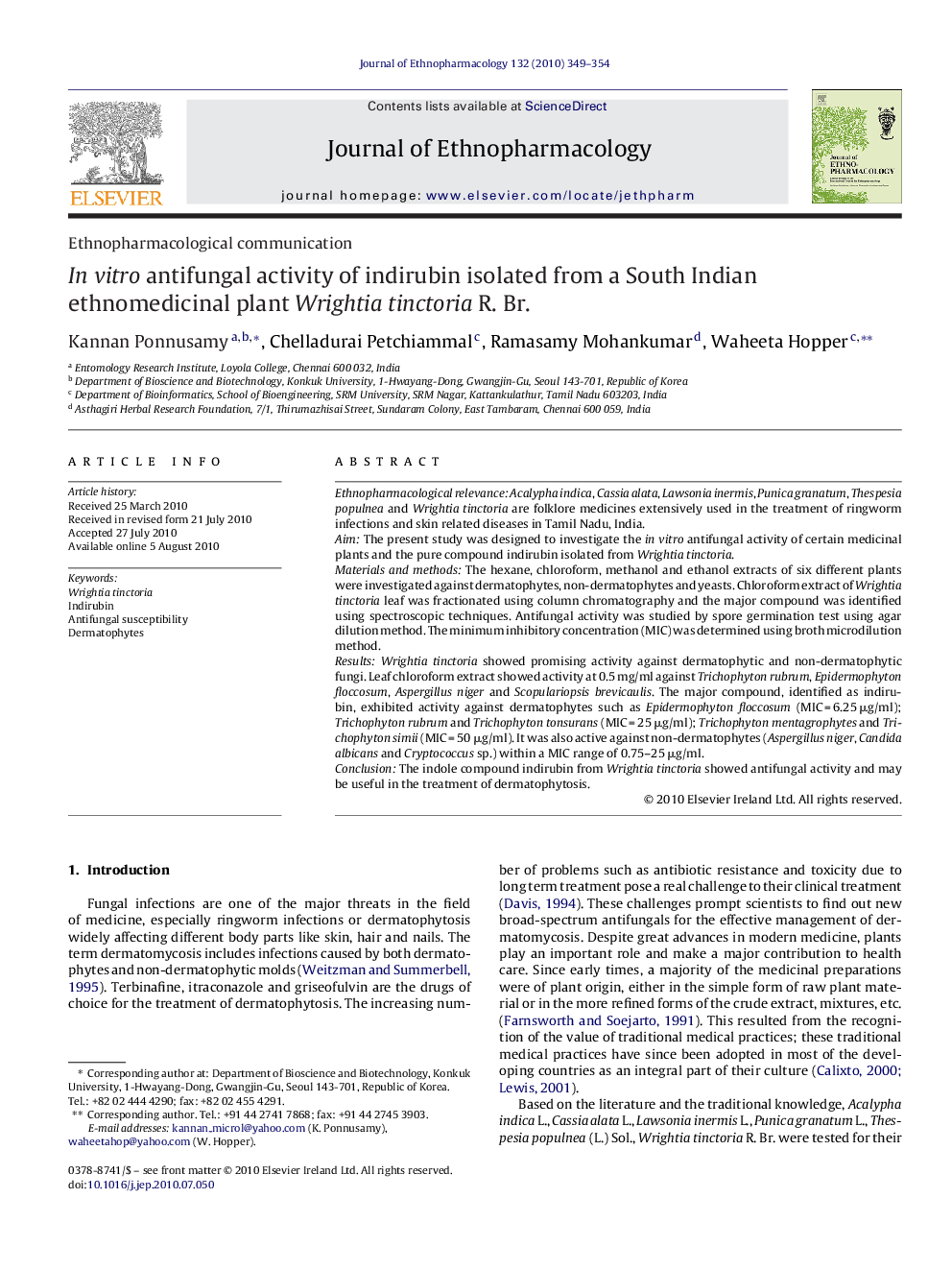| Article ID | Journal | Published Year | Pages | File Type |
|---|---|---|---|---|
| 2545689 | Journal of Ethnopharmacology | 2010 | 6 Pages |
Ethnopharmacological relevanceAcalypha indica, Cassia alata, Lawsonia inermis, Punica granatum, Thespesia populnea and Wrightia tinctoria are folklore medicines extensively used in the treatment of ringworm infections and skin related diseases in Tamil Nadu, India.AimThe present study was designed to investigate the in vitro antifungal activity of certain medicinal plants and the pure compound indirubin isolated from Wrightia tinctoria.Materials and methodsThe hexane, chloroform, methanol and ethanol extracts of six different plants were investigated against dermatophytes, non-dermatophytes and yeasts. Chloroform extract of Wrightia tinctoria leaf was fractionated using column chromatography and the major compound was identified using spectroscopic techniques. Antifungal activity was studied by spore germination test using agar dilution method. The minimum inhibitory concentration (MIC) was determined using broth microdilution method.ResultsWrightia tinctoria showed promising activity against dermatophytic and non-dermatophytic fungi. Leaf chloroform extract showed activity at 0.5 mg/ml against Trichophyton rubrum, Epidermophyton floccosum, Aspergillus niger and Scopulariopsis brevicaulis. The major compound, identified as indirubin, exhibited activity against dermatophytes such as Epidermophyton floccosum (MIC = 6.25 μg/ml); Trichophyton rubrum and Trichophyton tonsurans (MIC = 25 μg/ml); Trichophyton mentagrophytes and Trichophyton simii (MIC = 50 μg/ml). It was also active against non-dermatophytes (Aspergillus niger, Candida albicans and Cryptococcus sp.) within a MIC range of 0.75–25 μg/ml.ConclusionThe indole compound indirubin from Wrightia tinctoria showed antifungal activity and may be useful in the treatment of dermatophytosis.
Graphical abstractWe have screened for antifungal activity of medicinal plants traditionally used in South India. Indirubin from Wrightia tinctoria showed promising activity against dermatophytic and non-dermatophytic fungi.Figure optionsDownload full-size imageDownload as PowerPoint slide
